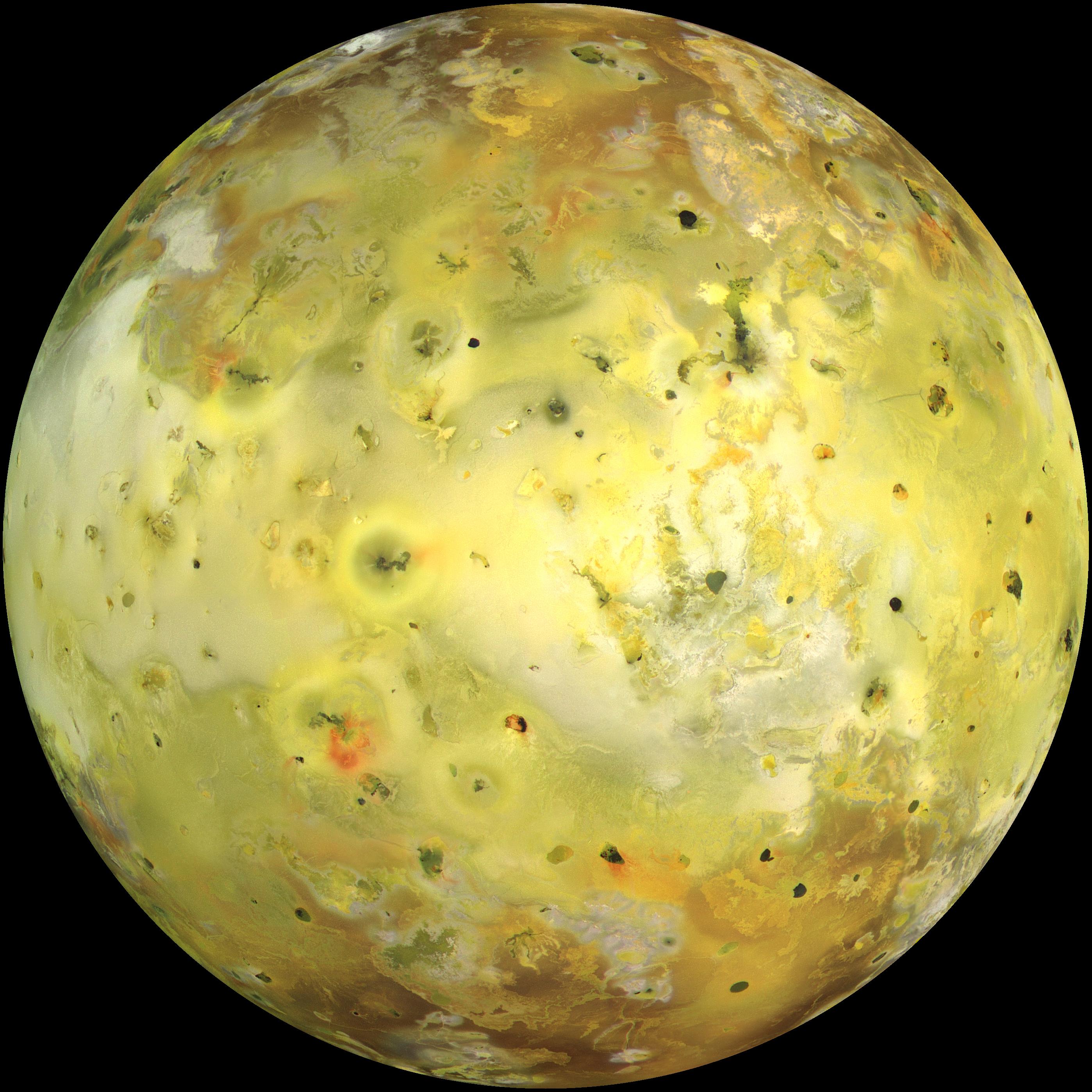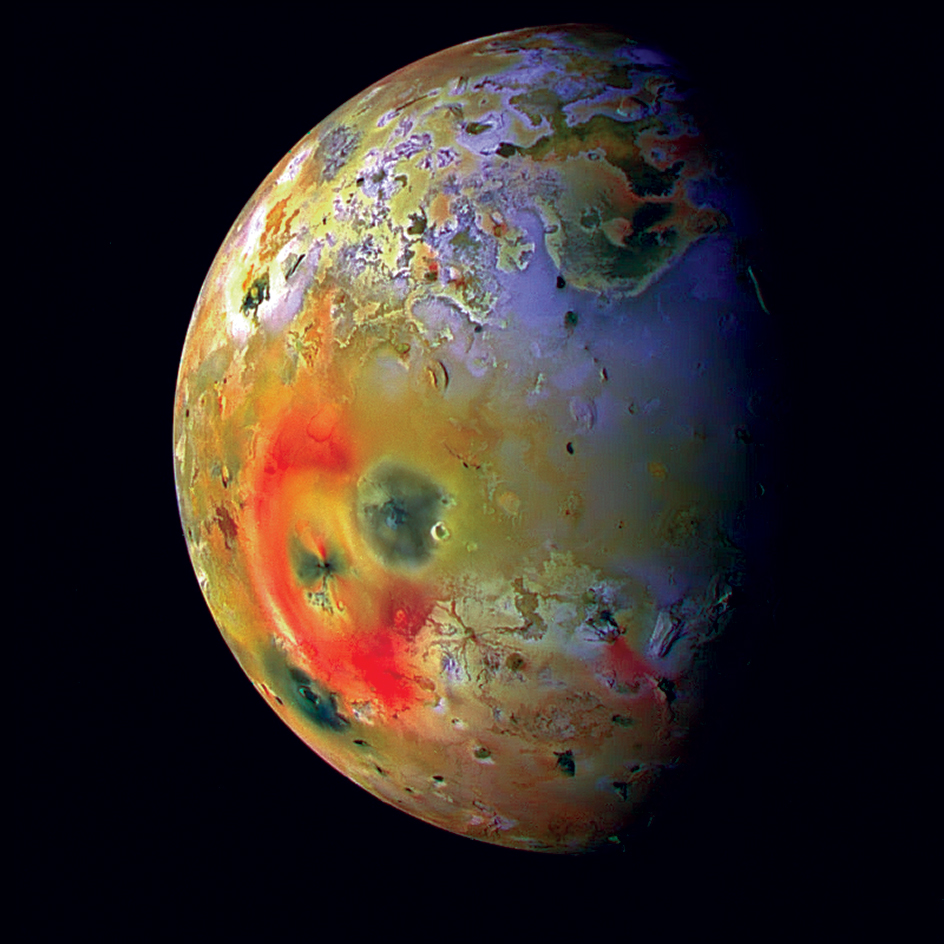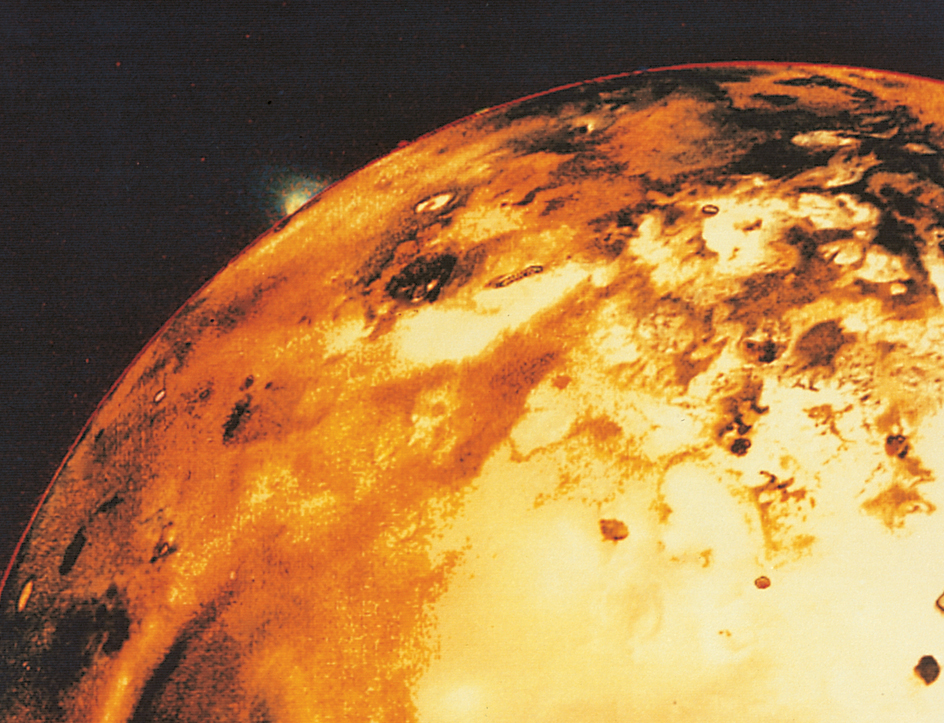Io, << EYE oh, >> is a large moon of Jupiter that is more geologically active than any other satellite—or any planet—in the solar system. Its surface is covered with recent lava flows and more than 200 large volcanic depressions. Many of its volcanic eruptions resemble those of geysers. In these eruptions, sulfur and sulfur dioxide gases, heated by contact with hot volcanic rock, shoot into space. The gases sometimes reach altitudes of hundreds of miles or kilometers. There, the gases form umbrella-shaped plumes and produce a sulfurous “snow.”


Sulfur that has settled or flowed onto the surface makes Io the most colorful satellite in the solar system. The sulfur creates a rich array of yellows, greenish-yellows, and oranges, along with gray and black. The satellite has a large, iron-rich core that is probably liquid, a thick mantle of dense rocks, and a crust of lighter rocks and sulfur compounds. Its thin, patchy atmosphere consists mainly of sulfur dioxide above volcanoes.

The high temperature on Io’s surface during the day is about –260 °F (–160 °C). The erupting rock lava may be as hot as 2550 °F (1400 °C). Io’s heat comes from the gravitational forces of Jupiter and its other large satellites. These forces pull Io’s interior in different directions. As a result, the interior flexes, producing heat and partially melting the mantle.
Io is 2,264 miles (3,643 kilometers) in diameter, about 5 percent wider than Earth’s moon. Io orbits Jupiter in 1.77 days at a distance of 262,000 miles (421,600 kilometers). The Italian astronomer and physicist Galileo discovered Io in 1610.
